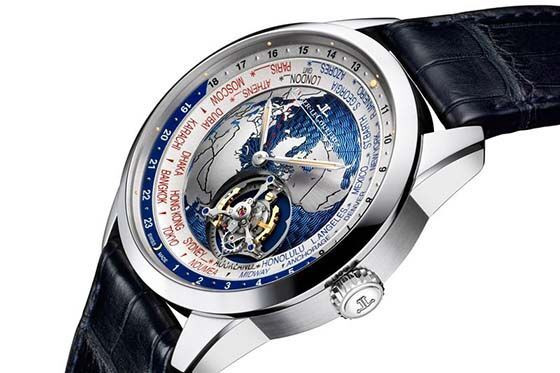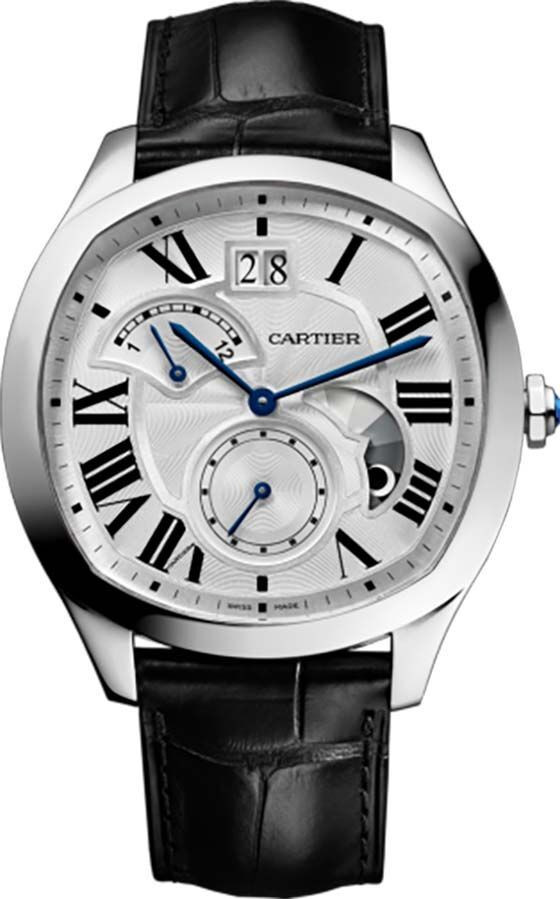What Time Is It? Multiple-Time-Zone And World-Time Watches
Sponsored content from Modern Luxury
Watches that simultaneously indicate several time zones are the perfect incarnation of our time, an age in which travel and communications cross every imaginable border. Fully aware of this, watchmakers continue to develop this flourishing sector.
From watches equipped with two hour hands to the famous world-time models, an increasing number of timepieces are displaying two, three, four, 24 or even more time zones, all on the same dial. More than any other complications, these travel watches offer the opportunity for multiple technical or aesthetic reinterpretations, using pointers, discs, or even small, three-dimensional globes, complete with oceans and continents. For travelers’ comfort, brands are focusing on developing the most intuitive, user-friendly possible methods of setting or correcting the time.

Before the division of the globe into 24 time zones, each region lived at its own pace, and travelers had to adjust their watches constantly as they moved from one place to another. There were a multitude of local times, based, more or less, on longitude: more than 70 in North America and around 30 in Europe. The increase in long-distance travel, and especially the birth of the railroad, generated a need to create a unified system of time. In 1847, the British Railway Clearing House recommended that all companies adopt the time at the Greenwich Observatory (Greenwich Mean Time, or GMT), which already served as a reference for navigators. In 1884, at the International Meridian Conference in Washington, DC, the decision was taken to divide the planet into 24 time zones, each one covering 15¼ of longitude (one hour), and to assign longitude 0 to the Greenwich meridian. This system was rapidly adopted by most of the countries in the worldÑexcept France, which did not come around until 1911.
The first dual time zone watches, sometimes called captain’s watches, were equipped with two movements, more or less coordinated, that displayed the time zones on two different dials. Later, watchmakers perfected this system by using just one movement, equipped with a mechanism uncoupling the additional hour hand.
Though watches with a multitude of local times already existed as early as the 17th century, it was not until the 1930s that a Genevan watchmaker, Louis Cottier, invented the ingenious world time system, which allows the wearer to read the time in all time zones simultaneously.
GMT and UTC
Greenwich Mean Time corresponds to the mean solar time at the meridian crossing the Greenwich Royal Observatory, near London. It was adopted at the end of the 18th century as a reference time zone for all others on the planet, and is based on the rotation of the Earth. It was replaced in 1972 by Universal Coordinated Time, better known by its acronym UTC, which is based on International Atomic Time (with the acronym TAI, for its French name). Watchmakers commonly use the term GMT to designate a watch indicating a second time zone, even if that time zone is not Greenwich.

How does it work?
Multiple time zone watches offer such a variety of technical approaches and methods of use that it is impossible to describe in detail all the particularities of their functioning.
Generally, they possess an additional display for the hour that is powered by the main system, but can be temporarily disengaged in order to set it to local time without affecting the accuracy of the minutes and seconds. A pushbutton or the crown serves as a tool for setting the second time zone.
In order not to awaken a friend or a business partner who might be sound asleep, travelers often need to know if it is day or night in their home region. This is why some watches display home time on a 24-hour scale. Others use a 12-hour display, but supplement this with a day/night indication (a small aperture or subdial that changes from white to black according to the time of day), a small additional 24-hour scale or an AM/PM display.
Many watches boast another very useful function when one is traveling: automatic linkage of the date to local time.

World Time
To continuously display the time in all corners of the globe, world-time watches possess — in addition to the central hands — two mobile discs, one with 24 gradations, the other bearing the names of the reference cities. The 24-hour disc turns counterclockwise.





















